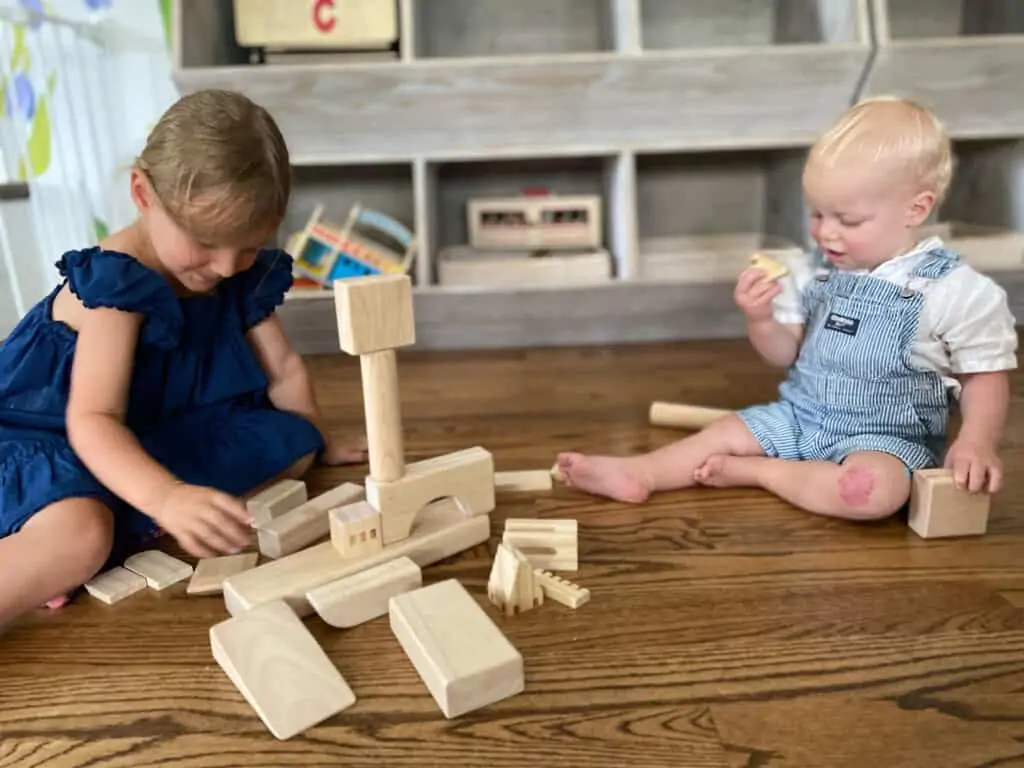The Best Toys to Build Communication Skills by @playtalklove
As new parents, we are often inundated with information about what is best for our kids and their development. It should come as some relief then that you can – and should – keep it simple!

The Best Toys to Build Communication Skills by @playtalklove
By: Chelsea Swopes @playtalklove
As new parents, we are often inundated with information about what is best for our kids and their development. It should come as some relief then that you can – and should – keep it simple!
Between the toy aisles, advertisements, and your opinionated neighbor, you’re probably getting the message that your baby will learn to read if you show them the right flashcards, that they will start to talk if you use a certain app, or that a noisy “learning” toy is the only way they will master their numbers, letters, etc.
But the truth is that supporting your child’s language development is much simpler! Research shows that babies learn language through natural, everyday interactions with tuned-in caregivers. So, all you really need in your home are toys that encourage those interactions. This is where open-ended toys come in: they are the best toys for fostering understanding, imagination, critical thinking, interaction, and communication. When we use open-ended toys with our children and focus on modeling simple language like nouns and verbs, we are actively building so many skills!
For example, when we play with a doll, we can narrate as we execute simple actions (like eat, drink, rock, or cry). Our baby may not be able to say these words yet or even imitate these actions themselves, but they are watching and beginning to build understanding that when mommy gives the baby a bottle and says “drink”, that is what that word means! Eventually, they may be able to do the actions all on their own or even verbalize the words that go along with them spontaneously. In a similar way, when we roll a ball back and forth, we are building foundational pre-verbal skills of shared engagement, turn-taking, and imitation of actions.
Here are some of my favorite open-ended toys:
- Ball (perfect for infants and kids)
- Baby Doll/Stuffed Animal and wooden play people
- Car
- Bubbles (love these refillable bubbles)
- Chunky Puzzles (like this one and this one)
- Blocks (26 piece starter set, 100 piece set, block and shape set)
- Cause & Effect Toys (like ball drop/poppers, car ramps, and pop-up toys)
- Put In/Take Out Toys (like shape sorters)
- Lovevery Play Kit with multiple open-ended toys
Toddler-Appropriate Open-Ended Toys
- Pretend Play Sets (like a doctor’s kit and cleaning set)
- Play Food, Pots and Pans, Kitchen
- Playdough (make your own playdough kit, DIY homemade playdough)
- Lovevery Play Kit with multiple open-ended toys
- Open play building set
If you have versions of these toys in your home, but they happen to be battery-powered (and therefore do most of the talking!), then remove the batteries and have your child use the toy without them!
Although the toys I’ve suggested and the interactions I’ve described seem so simple, they are so impactful when it comes to development. Think about how differently a child and parent may have interacted in the scenarios I described above if the toys were talking and moving the whole time. The opportunities to think, interact, react, and understand would have absolutely been hindered.
So, keep it simple. Be intentional about the toys you have in your home. Is it a toy that fosters interaction and understanding, or is it just something fun to look at and listen to? If it’s the latter, you don’t need it and neither does your little one!
I share many more tips, tricks, and real-life examples for supporting your little one’s language skills over on Instagram at Play Talk Love. I love helping parents harness the power of play with practical strategies and information!
And if you haven’t already, check out our podcast episode. It’s filled with so many more tips on building communication skills and the practical things we can do to get our babies and kids talking!


